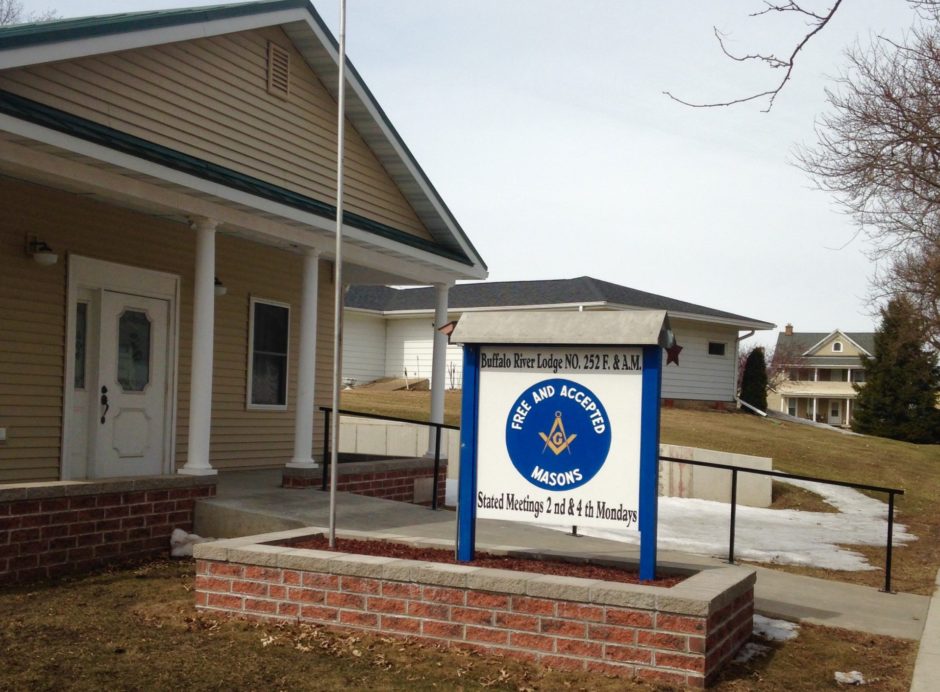The true origins of Freemasonry are unknown. It is believed to have existed for several hundred years before the social and political climate were such that the Freemasons felt comfortable to make themselves known. The first undisputed identified date is 1717 when the Grand Lodge of England was formed.
Many theories exist as to how the Freemasons came to be and why they developed such a strong system of moral education. One of the theories is that the Masons, during King Solomon’s reign, organized themselves into a body of reflective thinkers, and through Solomon’s proverbs of wisdom, a greater system of morality came into practice.
Another theory, most widely accepted, is that the operative guilds of craftsmen and tradesmen of the late middle ages and early renaissance periods extended the terminology of their trades to a deeper application of human conduct.
Several non-Masonic academic historians have presented a newer theory which is gaining support. They presented the theory that Masonry was born out of the Papal Templar Knights’ excommunication from Rome and the Catholic Church in the later stages of the Crusades. In this theory, it is alleged that the Mason’s references to King Solomon’s Temple and use of operative tools and symbols was purely intentional, and that it did not develop out of a natural evolution from operative masonry. Much of the language of our ritual can be traced to this theory, and it is being taken very seriously by many.
The political and theological climate on the European continent in the 1300’s did not allow for fraternal guilds, while in Great Britain they were sought by craftsmen and encouraged by royalty. This helps to explain why Freemasonry today traces its roots back to England and is most widespread in English-speaking countries.
In 1356, rules for the guidance of the Masons in London were established and the 1370’s had formed these into the Company of Freemasons and the larger Company of Masons. The regulations of these craft guilds were recorded on parchment and are called the Manuscript or Gothic constitutions, the earliest of which comes from the 1390’s and is called the Regius Poem.
The old constitutions were divided into two separate sections. The first is called the Legend of the Craft and describes the origin of Masonry in early Biblical times and traces it through King Solomon’s Temple to England. This section is part myth and part history. The second section is called The Old Charges, and is a listing of the rules that were created at that time to govern the guild and settle disputes. One might describe them as applied morality, and this would include provisions for aged Masons as well as aid for the widows and orphans of its members. These documents were read to the candidate during his initiation, much as certain lectures are recited in lodge today.
The 14th century struggles between the Hospitalers and the Knights Templar, both Crusade-inspired orders, culminated in the destruction of the Templars. While the Inquisition actively pursued the European continental Templar Knights, it is theorized that the English authorities did not elect to so pursue them and the Knights “went underground” and became a most important factor in the development of Speculative Masonry in that country.
Three important changes occurred in the 1500’s:
1) The Church in England separated itself from Roman authority which made most
of Great Britain officially “Protestant”.
2) There was a general decline in the demand for large, ornate church buildings.
3) The religious conflicts on the continent diverted royal spending.
During the late 1590’s an important change occurred. In the strict Protestant royal court in Scotland, a Roman Catholic architect named William Schaw recognized the decline of the Masonic guild and succeeded in re-organizing it. On December 2, 1598 he issued the first “Schaw Statutes” which took the old gothic constitutions and translated them into “the statutes and ordinances to be observed by all the Master Masons within this realm.” As the Master of Works to the Scottish crown, he was largely responsible for the revival of the mason’s trade, and he set the stage for the transition to philosophical Masonry by becoming, in effect, the first Grand Master. He also transferred power from the Guild Companies to individual lodges. The oldest lodge minutes yet found are dated 1599, and it is no coincidence that they are from Scotland. “Brother” Schaw’s efforts were successful and many of his ideas are found in Masonic organization today.
Within the London Mason’s Company, there is evidence of an inner fraternity known as the Acceptation. Those admitted to this body paid 20 shillings if they were members of the Mason’s Company or 40 shillings if not. Seven members of the company also belonged to the Acceptation. Since the Records of the Mason’s Company prior to 1620 have been lost, we can use this date as the earliest speculative lodge in evidence. It is possible that this explains our current use of Free and Accepted Masons, as at that time, all trade-skilled Masons were “free” to apply their trade, but now other non-skilled members were “accepted” to learn the philosophical aspects.
A chemist and non-Mason named Robert Plot described the nature of l7th century lodge activity in his 1686 book, The Natural History of Staffordshire (England). Dr. Plot was the curator of the Ashmolean Museum of Oxford University. The founder, Elias Ashmole was an early Accepted Mason. However, Scottish Lodges maintained much better records during this period and we are indebted to two excellent historians named Lawry and Lyon for much of what we know of 17th century Freemasonry .The Aberdeen Lodge minutes begin in 1670 and contain 49 names of which only 10 were operative Masons. The names include many earls, lords, and knights, several pastors, and other professional men.
It was common that ministers and bishops were often Freemasons. The Presbytery of Kelso in 1652 supported the right of Rev. James Ainslie to become a Freemason, stating that “there is neither sin nor scandal in its [the Mason’s] word.” As the Society changed from a scattering of independent lodges to these same lodges being subordinate to a national Grand Lodge (which occurred in 1717); ministers of religion played an increasingly important part. Nothing makes this more evident than the facts that the author of the Constitutions of the Freemasons (1723) was Rev. James Anderson, A.M. (a Presbyterian Scot), and the third Grand Master of Masons in England was Rev. J .T. Desaguliers (an Anglican priest, Doctor of Divinity, and member of the Royal Society). An analysis of early French and Italian lodges show that up to 7% of the members were Roman Catholic priests. Even today, many religious and lay leaders of many creeds are members of the Craft.
The Grand Lodge system is the administrative “heart” of speculative Freemasonry. In 1716-1717 four lodges in London began discussions and sent representatives, which met as the first Grand Lodge. They insisted that all Masonic lodges owed allegiance to this body and that brothers who wished to establish their own lodge, must seek this Grand body for a charter. Practically every lodge in the world, and certainly every recognized Grand Lodge can trace its history directly to the “mother” Grand Lodge in London, England. As the ritual became more standardized, and because Grand Masters were often wealthy, well placed gentlemen, the Society grew rapidly.


